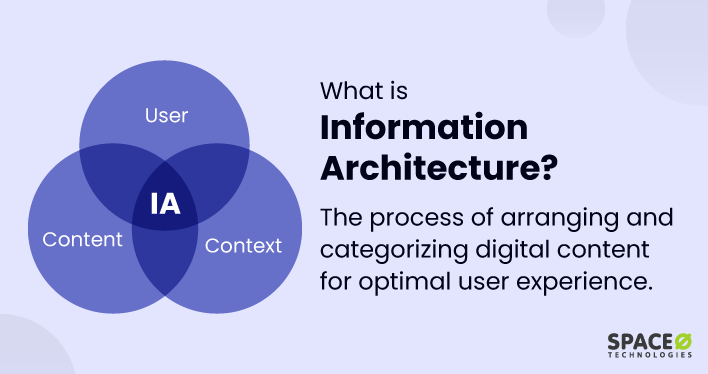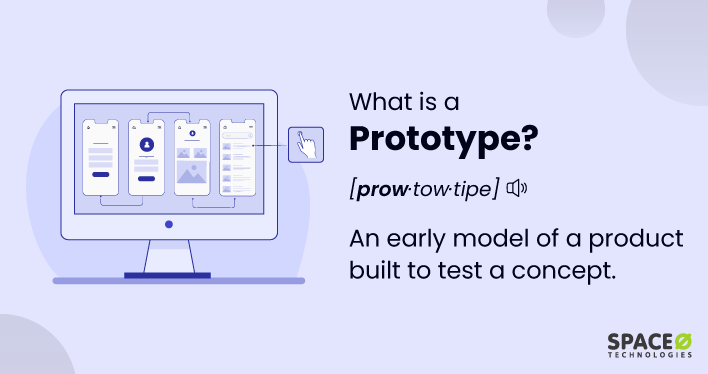Table of Contents
What is Information Architecture?
Information architecture (IA) is the process of organizing, structuring, and labeling content in a way that makes it easy to understand, navigate, and use.
Information architecture (IA) is the foundation of user experience design and plays a crucial role in creating effective websites, applications, and digital products on the world wide web. IA encompasses the organization of content, the structure of navigation systems, and the design of search and indexing systems.
Let’s quickly check the importance of information architecture.
Why is Information Architecture Important?
Information architecture (IA) is important because it has a direct impact on the user experience, usability, and overall effectiveness of digital products, such as websites and applications. Here are some key reasons why IA is crucial:
- Boosts User Interaction: An effectively organized information architecture (IA) showcases the process of locating and accessing information, minimizing user frustration, and cultivating a more enjoyable user experience. To provide a good user experience, a user interface plays a key role. The way information is presented and interacted with on a screen is a critical component of IA. If you want to know more in detail about user interface, here is an article on what is user interface and its importance.
- Supports findability: Information architects design IA to help users locate relevant content and resources within a digital space. By organizing content logically and providing clear navigation options, they enable you to easily find what they are looking for.
- Improves accessibility: A thoughtful IA considers the diverse needs of users, including those with disabilities or using assistive technologies. By ensuring that content is organized and labeled in a way that is accessible to all, IA promotes inclusivity and supports a wider audience.
- Facilitates efficient content management: An effective IA enables content creators and managers to organize, maintain, and update content more effectively. This, in turn, leads to better content quality and a more consistent experience for users.
- Supports business goals: A user-centered design IA can help meet business objectives by guiding users to specific actions or conversions, such as making a purchase or signing up for a newsletter. This alignment of user needs and business goals can lead to better overall performance for a digital product.
Information architecture designed by information architects is important for the world wide web because it directly affects the user experience, making it easier for users to navigate, find, and use the content. This ultimately leads to increased user satisfaction, better accessibility, and improved business outcomes for websites and digital products.
Now let’s quickly check the key components of IA.
4 Key Components of Information Architecture
Information architects utilize the key components of information architecture (IA) to create a coherent, organized, and user-friendly digital product. These elements work together to ensure a seamless user experience. These components include:
1. Organization systems: These are the structures that classify and categorize content within a digital product. Common organization systems include:
- Hierarchical systems: Organizing content into parent and child relationships, like a tree structure.
- Sequential systems: Arranging content in a linear, step-by-step manner, such as a tutorial or process flow.
- Matrix systems: Allowing users to explore content through multiple dimensions, such as by topic, date, or author.
2. Labeling systems: These are the ways in which information is represented to users through labels, titles, and headings. Effective labeling systems should be:
- Concise: Keep labels short and to the point.
- Descriptive: Ensure labels accurately represent the content they point to.
- Consistent: Maintain a consistent vocabulary and style across labels.
3. Navigation systems: These are the mechanisms that help users move through a digital space and access content. Key types of navigation systems include:
- Global navigation: The primary navigation menu, usually found at the top or side of a page, provides access to major sections or features.
- Local navigation: Secondary navigation options that provide context-specific choices, such as a sidebar menu or sub-navigation within a section.
- Breadcrumbs: A trail of links that show users their location within a site’s hierarchy and help them navigate back to previous levels.
4. Search systems: These are the tools that allow users to find content using keywords or phrases within a digital product’s content structure. Effective search systems can include:
- Basic search: A simple search box that searches the entire site for relevant content.
- Advanced search: Additional filters and options that help users narrow down their search results, such as by category, date, or other criteria.
Each of these components plays a vital role in the interaction between humans and computers. Information Architecture sets the groundwork for a cohesive structure that supports users in finding, understanding, and using content within a product.
While discussing these components, it’s important to consider how they are visually represented during the design phase. Wireframes are an essential tool used by business analysts to map out the IA of a product. If you’re interested in understanding more about this vital aspect of the design process, read this post on what is a wireframe. This will help you learn about types of wireframe and how is it important for IA.
In conclusion, information architecture is a vital aspect of user experience design that shapes the way users interact with products. By using key components such as organization systems, labeling systems, navigation systems, and search systems, information architects create seamless and accessible experiences.







